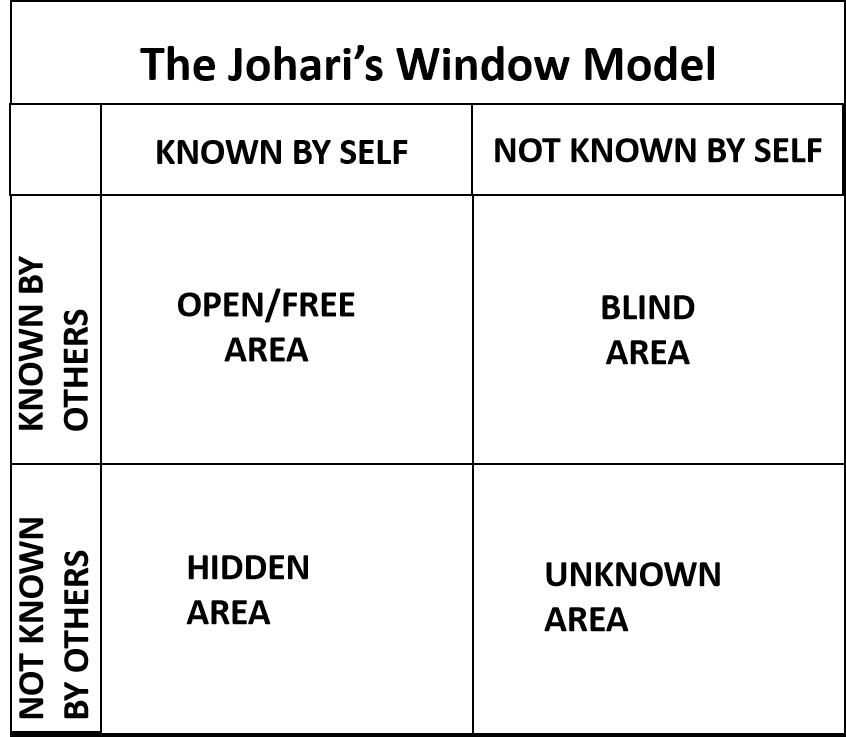Leadership Starts with Effective Communication.
Credit Managers have a leadership role in addressing today's challenges, and rapidly changing business environment. Communication is the heart and soul of leadership. To be an effective leader you must be able to transfer your decisions, policies, and ideas to others in a way that enables them to understand and act appropriately.
“Johari's Window” is a useful model to help break down communication barriers, whether you are dealing with a colleague, an irate sales rep, or a customer. The model provides a framework for understanding ‘conscious and unconscious bias.' It can help increase both self-awareness and our understanding of others.
What is the Johari Window?
The model, created by two psychologists, Joseph Luft and Harrington Ingham, is based on the concept of awareness that is felt by you (the communicator) and other people (to who you are speaking). It defines “where” information lies when two or more people are communicating.
The Johari Window model diagram looks like a window with four panes or quadrants. The terms used in the diagram go along with the “pane” of the window which they represent.

1. Open Area
Think of the Johari's window as a view into information about another person's attitudes, emotions, motives, skills, and potential behavior. The wider the open pane, the more comprehensive the visibility and understanding. For example, when you meet a new person for the first time, you introduce yourself, give your title, and explain the purpose of the conversation. You learn the same from the other person. This common knowledge is now in the open area. You each have a wider mutual understanding. As the conversation goes on, you express your feelings and desires, revealing more about yourself and your motives. By opening your open window, it is likely your counterpart will feel more comfortable doing the same, creating a common understanding, and inviting continued dialogue. This is where communication has a chance to grow. The larger the open pane, the more effective the communication is, leading to deeper and more authentic relationships.
2. Hidden/Façade Area
This panel is where personal attributes and details are only known by you, or the other party is hidden. For example, a need to reach a certain objective, or outside pressures influencing your behavior. You can build trust and expand the open area, by being sincere and transparent, revealing things about yourself and your motives.
3. Blind Spot Area
The blind spot area contains things you are not aware of, but other people can see or understand. You may have body language showing a lack of interest in a conversation, be too aggressive, be a bad listener, or show signs of self-doubt, or nervousness. You may talk too fast, be inappropriately formal, or informal for the setting, or be perceived as socially unaware.
There are also qualities that can be positive. By understanding your strengths, you can take better advantage of them in the future. As a manager and mentor to your staff, you can observe and provide constructive valuable feedback. Seek the same advice for yourself from others you trust. By understanding yourself better, you can make the open pane even wider.
4. The Unknown Area
There are likely to be things that both you and the other party are not aware of. For example, you may be trying to collect a past due balance from a customer. The customer contact does not know that you need the balance paid by a certain date to make your monthly target. It is a real priority. You may not know that the customer is under great pressure to conserve cash. The person you are speaking with is new to the company, with no idea that payments to your company should be prioritized since it is a long-standing and critical vendor. You can expand the open window further by breaking into the unknown area with an open mind, avoiding assumptions, asking probing questions, and with a sincere desire to understand the other's situation and motives.
Conclusion
Communication is a two-directional effort. To be an effective leader, you must be able to communicate effectively. “Johari's Window Model” provides a framework for understanding how to structure the communication between two parties, to increase openness and mutual understanding.
